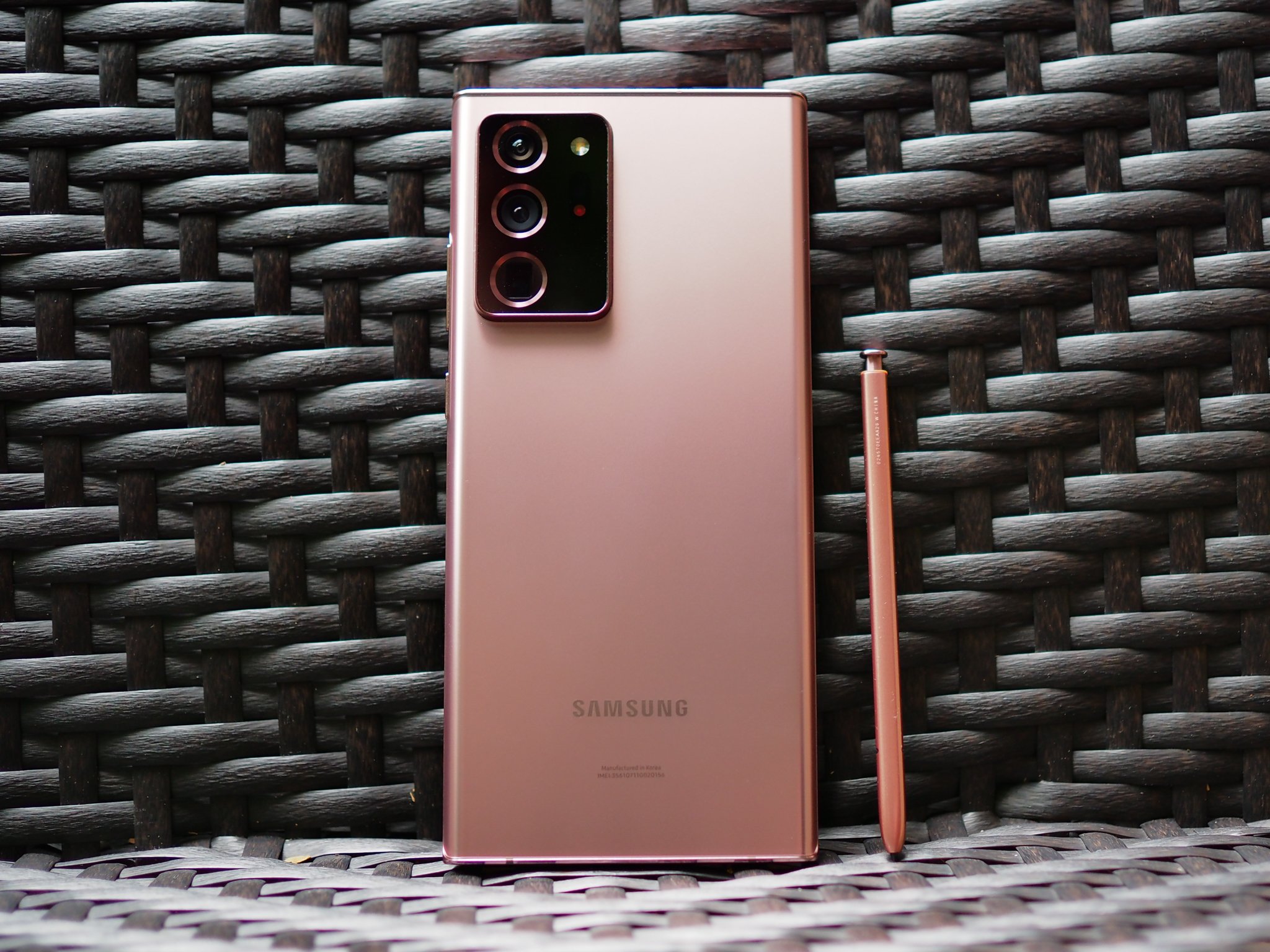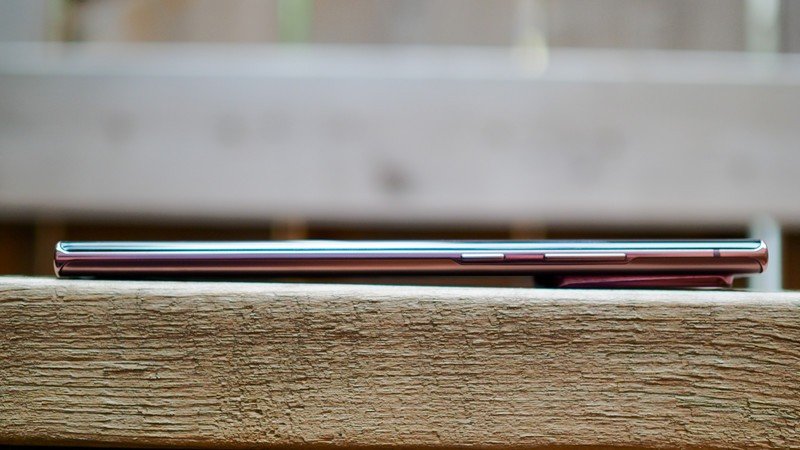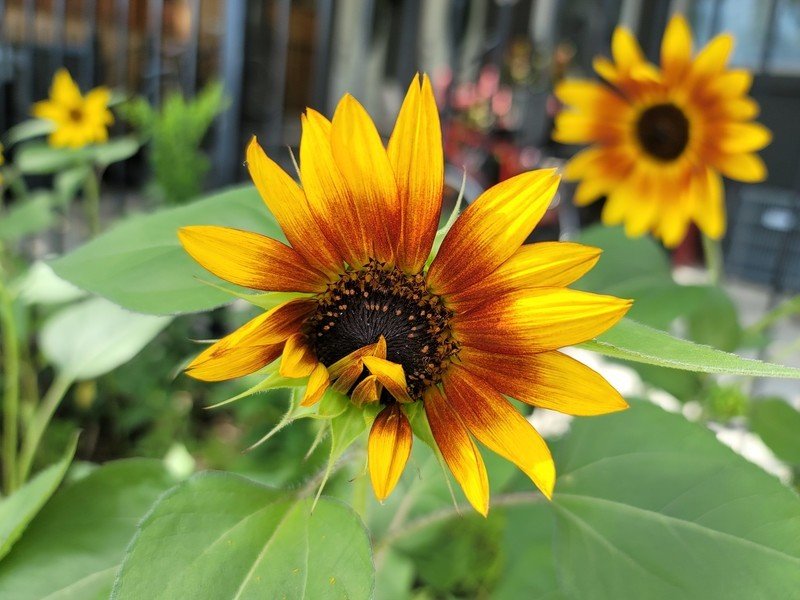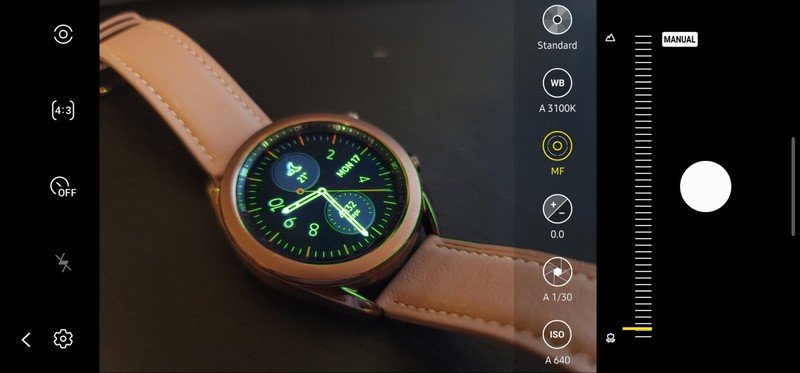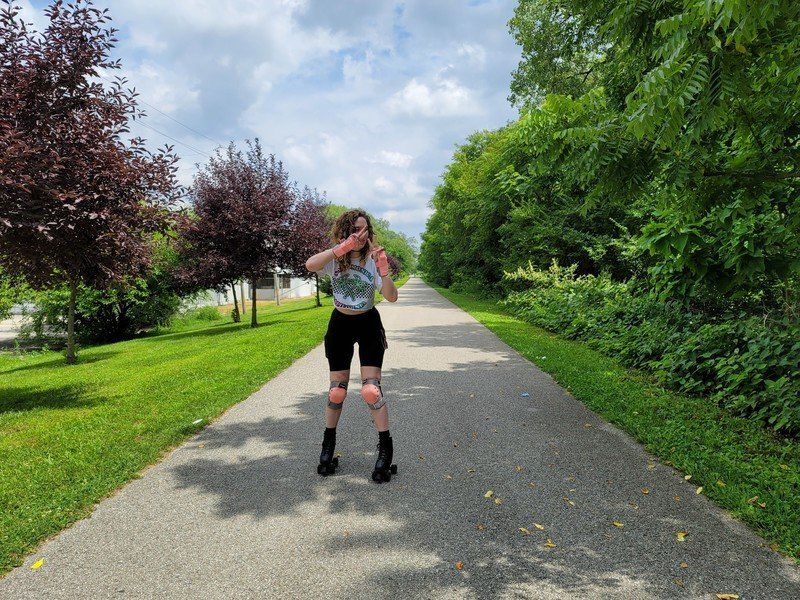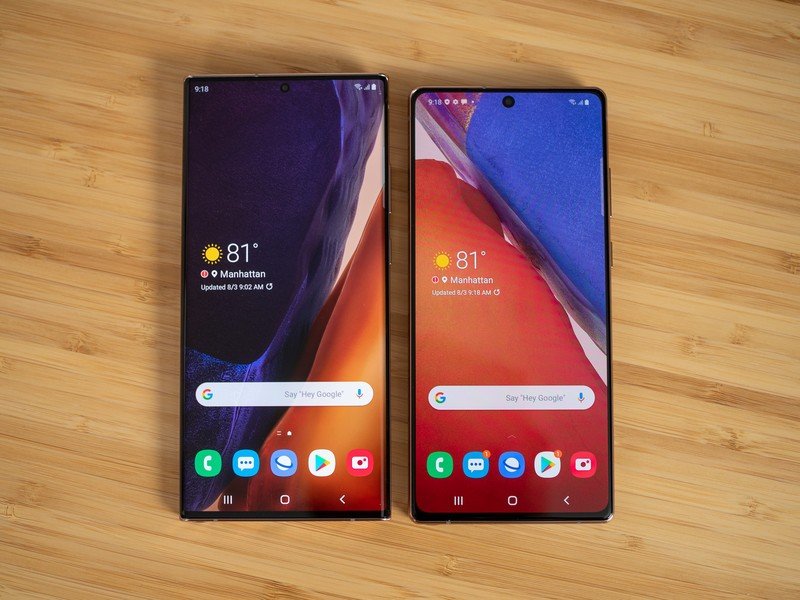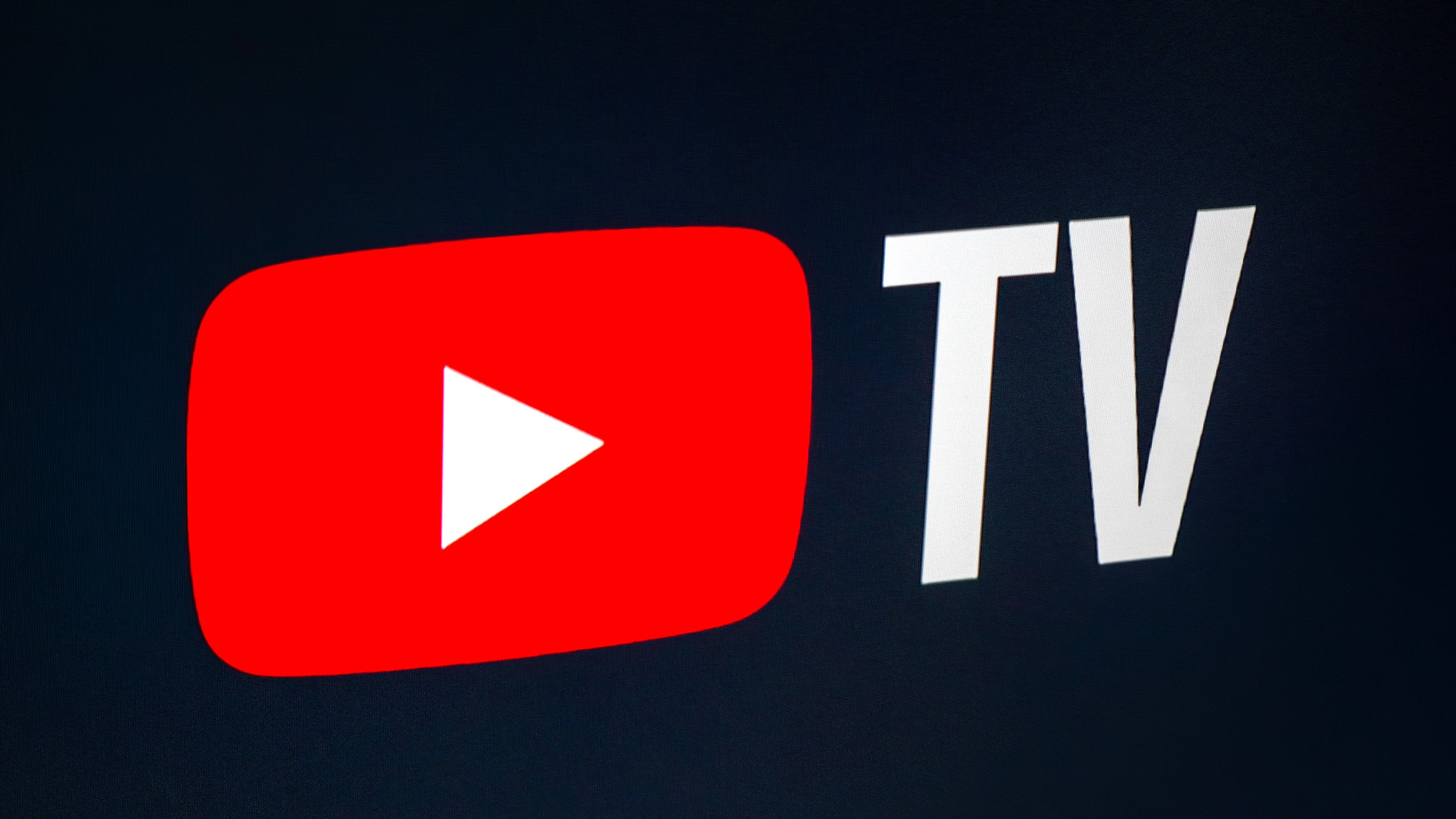Android Central Verdict
Bottom line: If you're a loyal Galaxy Note buyer, the Note 20 Ultra is the best possible version ever made. Featuring a much-improved S Pen experience, a huge camera upgrade over previous Note versions, and every possible spec you could ask for, this expensive monolith is worth the price of admission. You just have to know you need it.
Pros
- +
One of the best phone displays out there
- +
Impeccable performance
- +
Great camera performance
- +
S Pen upgrades
- +
All-day battery life
Cons
- -
Inexcusably slow and inconsistent fingerprint sensor
- -
Curved display causes false touches
- -
Very expensive
Why you can trust Android Central
At one point, I was going to start this review with a sentence like, "Samsung's never really screwed up the Galaxy Note; every version has been better than the last." I got about halfway through writing that sentence, and then it all came flooding back — the summer of 2016, when reports of Note 7s catching fire started trickling in. Then came the recall, then the reissue, then the second recall, then the bans. How could I have forgotten, even briefly, something that fundamentally changed Samsung, and the wider smartphone industry, so dramatically?
I forgot it for a moment because Samsung's done such a profoundly good job helping us forget it. In the wake of the Note 7 debacle, the company returned the following April with the Galaxy S8, which turned out to be its best-selling flagship ever, followed by the Note 8 a few months later. A year later, the Note 9 was the first premium Android phone to justify its thousand-dollar price tag, and the following year Samsung gave us two Note 10 models to gawk over as it worked hard to convince us they stood apart from their Galaxy S counterparts.
So now we have the Galaxy Note 20 Ultra, which borrows more than a bit of its pedigree from the huge and ultimately flawed Galaxy S20 Ultra. That phone, as you may have read, had some major issues with its cameras, from autofocus woes to exaggerated claims of telephoto prowess. Thankfully, the Note 20 Ultra makes up for those shortcomings and then some.
The Note 20 series heralds the culmination of the Note line, but Samsung took the best bits of the lineup and added it to the mainstream Galaxy S series — the stylus tech made its way to the Galaxy S21 Ultra and Galaxy Z Fold 3 foldable in 2021. And in a move that will delight Note fans, an integrated S Pen is baked into the Galaxy S22 Ultra, making it a spiritual successor to the Note 20 series.
Samsung Galaxy Note 20 Ultra Price & release date
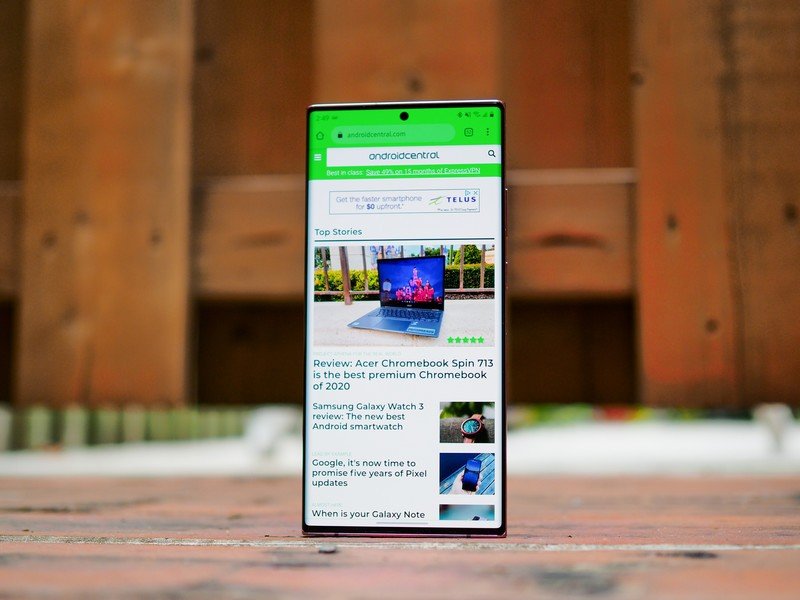
The Samsung Galaxy Note 20 Ultra was initially announced on August 5, 2020, then subsequently released on August 21, starting at $1,300 in the U.S., with an optional $1,400 model available offering 256GB of storage. Lucky for you, in the time since its release, the price has come down by a bit, down to $1,040 as of February, 2022, at select retailers like Amazon.
It's also much more affordable if you trade in your current smartphone or if you buy it through a carrier. In the U.S., like nearly all Samsung products, the Note 20 Ultra is available at AT&T, T-Mobile, and Verizon, along with smaller regional carriers and MVNOs. And because it's a 5G phone, you'll need a 5G plan to take advantage of the phone's cellular speeds.
You can get the Note 20 Ultra in three colors: Mystic Bronze, Mystic White, and Mystic Black. We're reviewing the new Mystic Bronze version and think it's the best color for the new phone.
Get the latest news from Android Central, your trusted companion in the world of Android
Samsung Galaxy Note 20 Ultra Hardware & design
If it looks like a Note and smells like a Note, it must be a Note. That's basically what you get with the Note 20 Ultra since it hews closely to Samsung's boxy-body-curved-display design language employed since the Note 8 three years prior. This time, though, the Note 20 distills the design language to a science, executing tolerances that few manufacturers can achieve at scale.
From the front, it's really hard to tell the Note 20 Ultra apart from 2019's Note 10+.
From the front, it's pretty hard to distinguish the Note 20 Ultra from the Note 10+, down to the only-slightly-larger 6.9-inch screen size. Turn it around, though, and the Ultra's enormous camera module is the first thing you see — especially because it prevents the phone from lying flat on a table.
As with all Samsung AMOLED displays, the one on the Note 20 Ultra is stunning — nearly perfect in many regards — with seamless color roll-off, inky blacks, incredible daytime brightness that's some 20% higher than its predecessor (though during regular usage, it's difficult to tell the difference), HDR10+ support, and more. The upside is that, once again, Samsung's made the best mobile screen out there, right in line with that of the S20 series and even competitive with the newer Galaxy S21 Ultra.
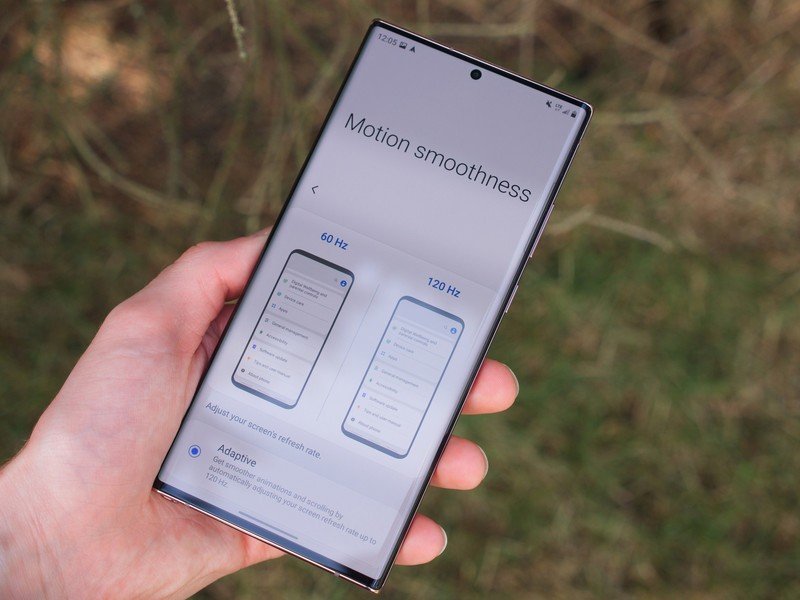
Samsung made some slight alterations to the way 120Hz works versus the S20 series, too; instead of asking you to manually choose between keeping the refresh rate at either 120Hz or 60Hz, when set to the higher rate, the system decides when to dynamically step down to 60Hz again. By taking the onus away from the user in deciding whether they want to prioritize smoothness over battery life, Samsung landed on the best of both worlds, and I only noticed a few instances where the step-down was awkward and noticeable.
You still can't do 120Hz at the Note 20 Ultra's full resolution; you'll need the newer S21 Ultra for that.
OnePlus did the same thing with its OnePlus 8 series, but outdid Samsung in one important area: it allowed 120Hz at the phone's highest 1440p screen resolution. With the Note 20 Ultra, Samsung still limits Dynamic Motion Smoothing, as it calls the feature, to 1080p. I actually think this is a good move since 120Hz at FHD resolution is a far better experience than 60Hz at QHD, but the option to override (and kill the battery much more quickly in the process) remains exclusive to the newer S21 Ultra.
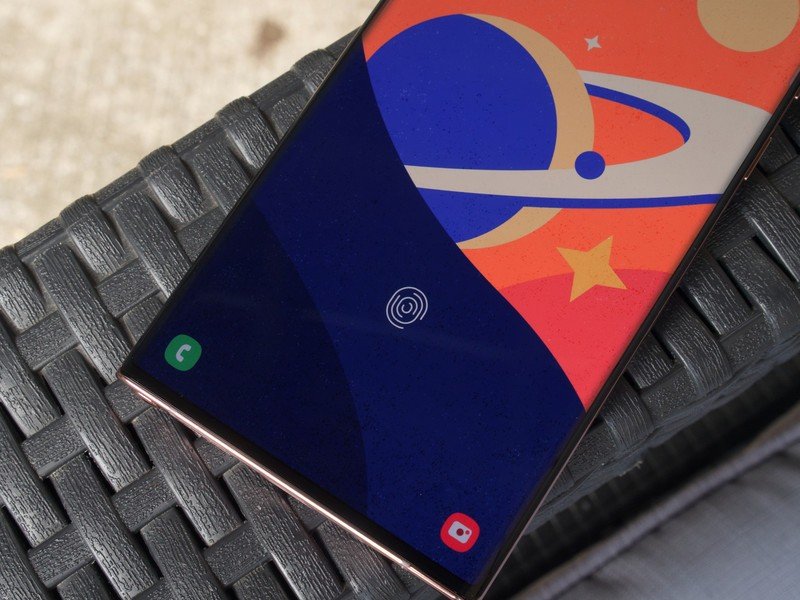
There are two areas where I wish Samsung would have taken critics' criticisms of the previous Note series to heart. The first is that Samsung did not improve the ultrasonic fingerprint sensor inside the Note 20 series. It's the same slow, unpredictable module from Qualcomm that debuted in early 2019 with the S10. The touch area is too small, and there's minimal visual or haptic feedback to indicate you've identified the correct location. The best the Note 20 Ultra can do is offer a small fingerprint overlay when the always-on-display is enabled, which it isn't by default.
I've complained about this fingerprint sensor through four Samsung phone generations now, and the response usually falls into two camps: people who think I'm completely overreacting and have no issues with usage at all, and those who, like me, despise the sensor and would prefer literally any other biometric option than this one. My frustration is exacerbated by the fact that, back in December 2019, I saw Qualcomm's second-generation ultrasonic fingerprint sensor in action, and its promise was incredible: bigger, faster, and less error-prone. I'm just glad the S21 Ultra finally brings a newer sensor.
This hardware is massive and beautiful, but Samsung still uses its annoying and slow ultrasonic fingerprint sensor, which is tragic.
My other area of complaint centers around the Note's curved glass. With any curved surface, palm and errant touch rejection need to be perfect. But it's not. On dozens of occasions during my time with the Note 20 Ultra, I had to either repeat touches that weren't registered or correct errant taps in the wrong places. I know it's a hard problem to solve, but it's one of Samsung's own making; the company didn't put curved glass on the mainline Note 20 because it's cheaper. Samsung even lessened the severity of the curve radius on the S20 series prior to the Note 20 series debut. But the Note 20 Ultra reinforces the fashion-over-function the series has been struggling with since the Note 5 back in 2015. Subsequent software updates have lessened the problem, but this shouldn't have been a problem to begin with.
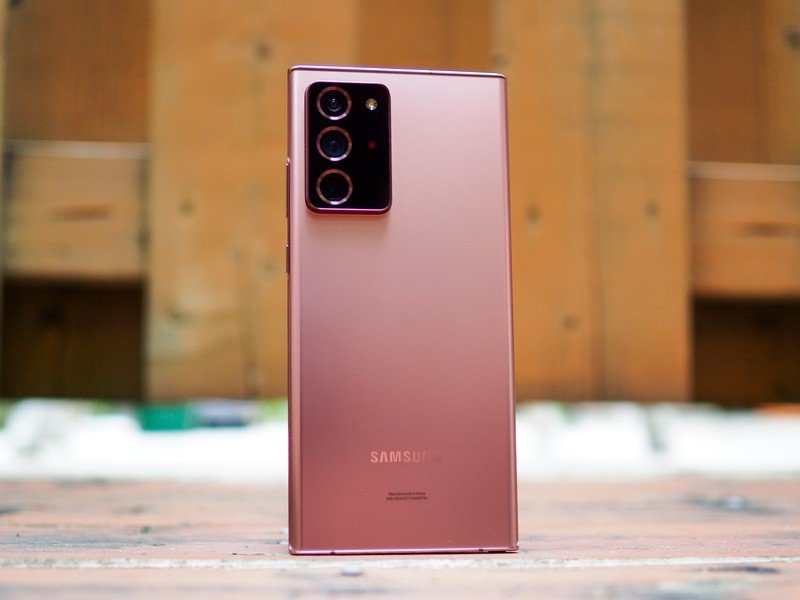
Of course, the Note has always strived to appeal to both fashion and function, and the Note 20 Ultra, at least in this Mystic Bronze colorway, is stunning. Like, nicest-hardware-ever gorgeous. There were more than a few moments during my time with the phone when I just sat with it and admired the amount of work and the years of exhaustive iteration that led to this finished product. Yes, I think it's a bit too big for my personal tastes, but this phone is beautiful as a physical object.
Samsung's decision to go matte with its finish this year should be applauded, too. Glass phones are fragile, yes, but they're also disastrous fingerprint magnets. This phone is both hardier than previous Galaxy phones, outfitted with Corning's new Gorilla Glass Victus on the front and back, but it's the particular light-absorbing coating on top of it that I appreciate most. Contrasted with the reflective color-matched aluminum frame, I'm all-in on this particular design decision, and I hope Samsung keeps it around for generations to come.
Samsung Galaxy Note 20 Ultra Hardware, performance, and battery life
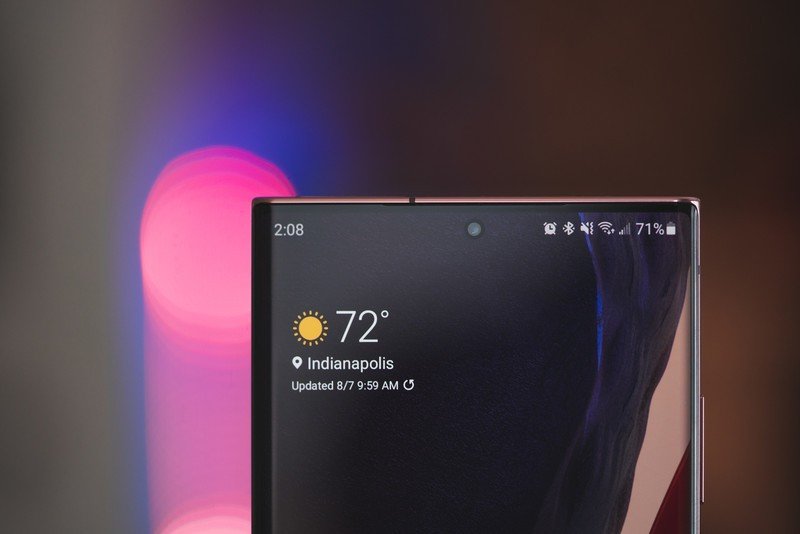
| Category | Galaxy Note 20 Ultra |
|---|---|
| Operating System | Android 11 One UI 3.1 |
| Display | 6.9-inch AMOLED 3088 x 1440 120Hz refresh rate |
| Processor | Qualcomm Snapdragon 865+ |
| Memory | 12GB LPDDR5 |
| Storage | 128GB / 512GB |
| Rear Camera 1 | 108MP primary f/1.8 OIS |
| Rear Camera 2 | 12MP telephoto f/3.0 5x optical zoom |
| Rear Camera 3 | 12MP ultra-wide f/2.2 |
| Front Camera | 10MP f/2.2 |
| Battery | 4,500 mAh |
| Water Resistance | IP68 |
| Dimensions | 77.2 x 164.8 x 8.1mm |
| Weight | 208g |
| Colors | Bronze Black White |
It should come as no surprise that the Galaxy Note 20 Ultra runs perfectly. The Snapdragon 865+ inside it isn't much changed from the 865 in the Galaxy S20 series, but the 10% bump in the Prime core clock speed, along with a GPU 10% faster, should be enough to satisfy you if top performance is a priority.
I really tried to tax the Galaxy Note 20 Ultra, from trying my hand at S Pen-assisted video editing to playing round after round of COD: Mobile, and the phone obviously passed muster. Of course it did; it cost $1,300 at launch. If you can find anything on the Android platform that is legitimately onerous to the Snapdragon 865+, I'll buy you a beer. (Seriously, tell me what you do to tax your phones aside from synthetic benchmarks.)
The Note 20 Ultra also comes with 12GB of LPDDR5 RAM standard, which should be more than enough for even the most spasmodic of multitaskers; 128GB of UFS 3.0 storage is the baseline, with an optional bump to 512GB for $100 more. And a microSD slot lengthens the still-plastic SIM tray (Samsung, up your game here); frustratingly, neither the regular Note 20 nor the newer Galaxy S21 series offers expandable storage. The Note 20 Ultra may be the last Samsung flagship to do so.
There should be nothing surprising about the rest of the Note 20 Ultra's spec sheet: it has impressively full and loud stereo speakers, which I often used to play nursery rhymes for my two-year-old daughter; an IP68 rating, which protected the phone from the time my daughter grabbed it and dropped it into a bathtub full of water (it survived); and a 4,500mAh battery, which did a pretty good job lasting through most days.
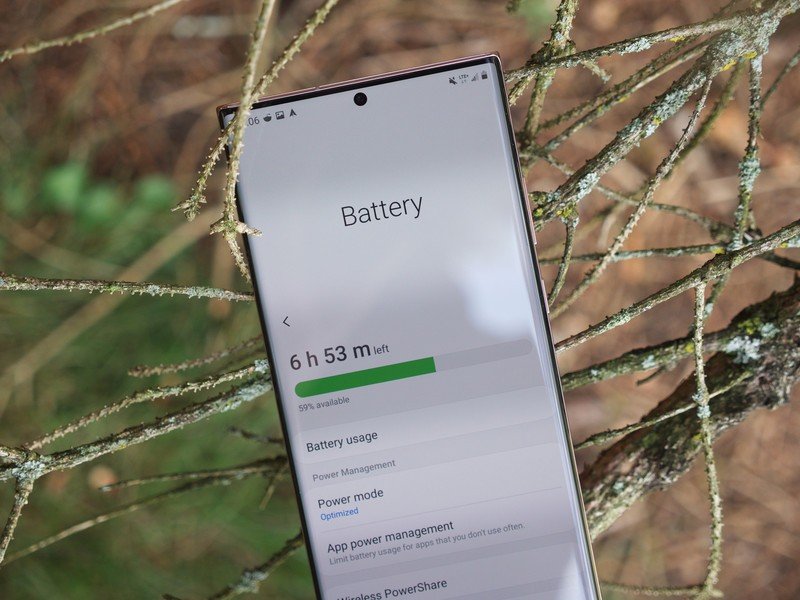
I can confidently say the Note 20 Ultra will be an all-day phone for the vast majority of people who buy it, even with 120Hz enabled. I found my unit was usually nearly dead by around 9 pm or 10 pm most nights, after having removed it from the wireless charger next to my bed at 7 am that morning. With an average of six hours of screen-on-time, I'm happy with the Note's uptime, but if battery life is more important than anything else, I'd stick with something in the Galaxy S20 or S21 lines.
My colleague, Hayato Huseman, who produced our companion review video, told me he got over seven hours of screen-on-time per day, so your mileage may vary.
The 5G dilemma
It would be easy to ignore the elephant in the room, the single-biggest thing weighing on Samsung's recent smartphone pricing: 5G and the Snapdragon 865.
While 5G is certainly promising, right now, it's hard to justify the added hardware cost that's built into it. Qualcomm charges the phone makers a lot of money for its top-of-the-line chip, and while some, like OnePlus, have chosen to cut various corners to keep their flagships under $1000, Samsung leans into the reality.
At the moment, the U.S. is in a transitional phase, with T-Mobile in the best position to show its strength. And in markets where it inherited Sprint's 2500Mhz-based 5G network, it's a great value proposition, but the vast majority of the cities where the company operates have slower-than-LTE 600Mhz 5G.
AT&T suffers from the same problem: where its 5G network is available, it's only sending slower, more weather-hardy signals over the 850Mhz spectrum, which makes it similar to LTE in most regards.
Verizon's 5G, while considerably faster, is harder still to come by, and the company even admitted that it's not worth spending extra money on right now when it chopped the additional fee it used to charge to access its mmWave 5G network.
The problem is that, at the moment, if you want to spend good money on a phone in the U.S., you're essentially paying a 5G tax. That tax is less pronounced on devices running Qualcomm's less powerful chips like the Snapdragon 765, including the Motorola Edge, but it's still there. If you don't care about being on the latest wireless network right now, and I don't blame you if that's the case, you have to make the choice to wait for the networks to improve or the phones to get cheaper. Either way, it's hard to recommend spending four figures on a phone when you know so much of that investment is going to waste right now.

The S Pen — Joe's take
Year after year, the distinction between the Galaxy S and Note series becomes increasingly difficult to identify. The Note used to stand out as Samsung's power-user smartphone, but we now live in a world where the Galaxy S handset that comes out before the Note is every bit as fast and capable. Even more recently, the Note's future has been further obscured as rumors flood that Samsung will stop making them, instead bringing S Pen support to other devices like the S21 Ultra and future Z Fold models. Still, the S Pen has been one of the Note's greatest strengths since the very beginning, and with the Note 20 Ultra, it picks up a few key features and improvements in an attempt to make it stand out as a legitimate benefit over the already great S20 lineup.
Perhaps the most notable upgrade the S Pen sees this year is its reduced latency. The Note 20 Ultra boasts an impressive latency response of just 9ms, which is considerably less than the 42ms latency previously offered on the Note 10. That's a flashy number to tout on paper, but the real-world benefits are more difficult to discern.
I don't have an artistic bone in my body, which means my use of the S Pen is reserved for navigating the user interface and taking handwritten notes. The Note 10's S Pen never felt slow or unresponsive to me, and using it side-by-side with the Note 20 Ultra, I personally can't notice much of a difference. The only time where I could visibly see the Ultra's reduced latency came into play when drawing long lines very quickly on the screen. Where the Note 10's S Pen gets ever-so-slightly ahead of the line that was being drawn, the S Pen on the Note 20 sticks with its virtual ink as if you were writing on real paper. It's great to see that Samsung is constantly working to improve the S Pen experience, even if this is likely something that only skilled artists will see any true benefit from.
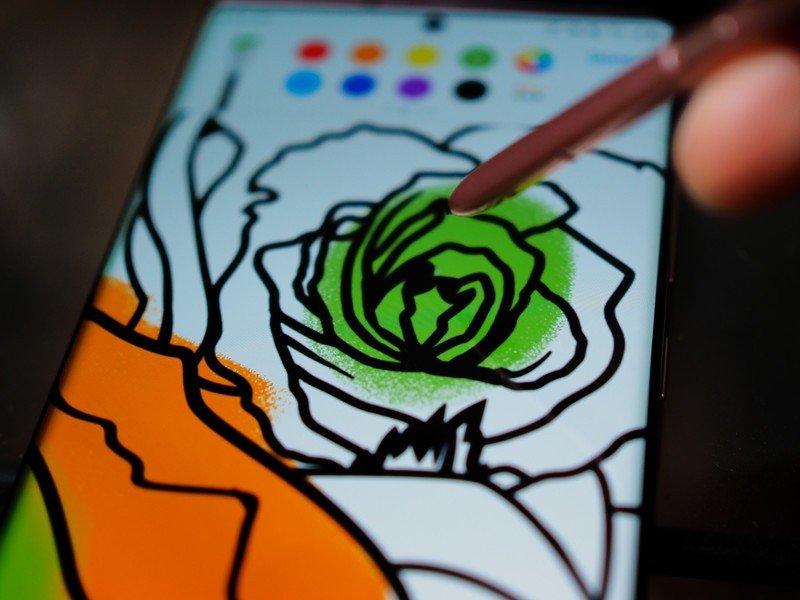
The other big upgrade for the S Pen is a new batch of Air Actions. Air Actions were introduced on the Note 9 as a way to remotely interact with the camera app, and with the Note 20, they're expanded as a new way to navigate the phone and quickly open apps. There are five actions/gestures you can perform with the S Pen, and each one can be customized as a navigation button, S Pen feature, or app shortcut.
The S Pen's Air Actions are pretty unreliable, which means most people will abandon them before they're memorized.
The idea is to expand the functionality of the S Pen and make it more of a remote for the Note rather than just a stylus. In my testing, however, I found these Air Actions to be incredibly unreliable. Air Actions require an insane amount of precision to be performed accurately, and because of this, the majority of my time spent using them saw me making the wrong action or messing up the gesture altogether. The idea of having five app shortcuts that you can call on at any time is excellent, but after my 10th failed attempt at using Air Actions, I mostly gave up on the feature.

Samsung's also packed a bunch of smaller tweaks into the Samsung Notes app, and while there's nothing here that's revolutionary, they all help Samsung Notes feel even more fleshed out than it already was. Notes can now be organized in desktop-like folders for vastly better organization. There's a new PDF import tool for quickly annotating files and an Auto Straighten feature that automatically straightens out your handwriting with the tap of a button.
One of the flashier additions is Audio Bookmark, which works when you're jotting down notes while recording audio from a business call, lecture, etc. Once the recording is complete, you can tap on any notes you took during it and jump to that section of the recording. It's a very specific feature that a lot of folks may completely ignore, but it's honestly quite handy and could prove to be a lifesaver during especially long Zoom calls.
Here's the thing. Even though the reduced latency isn't super noticeable and the new Air Actions are disappointing, the S Pen was already the best stylus available for a smartphone. Even if Samsung only made it marginally better, it already had an incredible foundation to begin with. There's nothing here that'll completely change your mind about the S Pen if you already weren't a fan of it, but if it's a tool you've relied on for years, the Note 20 Ultra offers the best experience you can get for it.
The S Pen — Daniel's take
Because of how much space the camera housing takes up on the right side of the phone, Samsung moved the S Pen's housing to the left side of the phone's underside, next to the bottom-firing speaker and the USB-C port. A lot of people have complained about how this interrupts muscle memory or that it's not ideal for right-handed users. These are all true, and it's also true that even if you're coming from another Galaxy Note, you'll likely get used to it within a couple of days. I did.
The more meaningful thing to know about the S Pen is that, while physically identical to the one on the Note 10 series (they're interchangeable if you have one of the previous models), the Note 20 Ultra accepts input at five times lower latency than the Note 10 — 9 milliseconds versus 45ms — and less than half that of the Note 20, at 26ms. The 120Hz display also conveys that lower latency much more realistically.
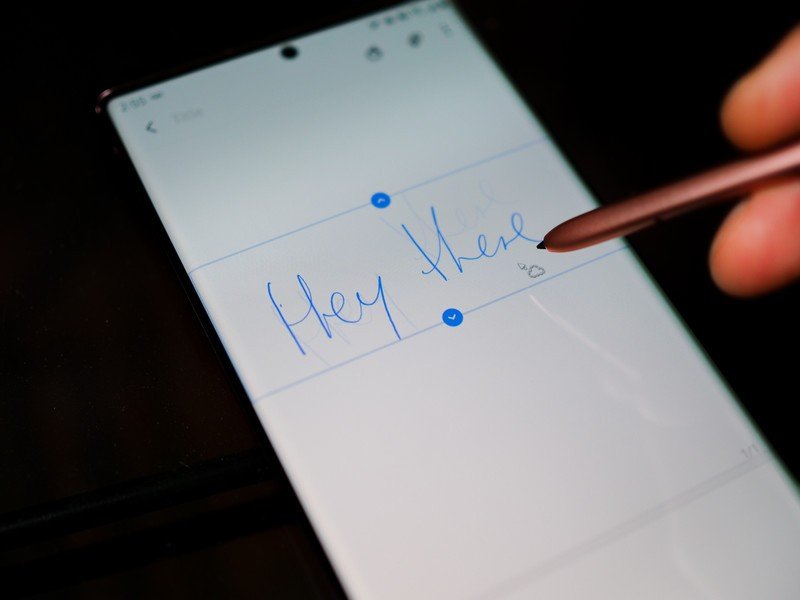
In real-world usage, this means that there's considerably less lag between the time your S Pen touches the screen and when you see something happen, like a pen or brush stroke, or when navigating Samsung's One UI software.
With previous Notes, I'd always made a concerted effort to use the S Pen but got frustrated by the input lag, which got worse the more text was added to the page. Even on first-party apps like S Note, I always got the impression the phone couldn't quite keep up with me, and I heard the same sentiment expressed by students and enterprise workers alike. This time, there are no such issues; Samsung not only made the software stack more robust, as you'll see below, but the hardware can now easily keep up with whatever you want to do, be it jot quick notes, sketch a thought, or spend time making fine art in one of the supported apps.
Hey Galaxy Note owners, what are your favorite ways to use the S Pen? ✍️Hey Galaxy Note owners, what are your favorite ways to use the S Pen? ✍️— Daniel Bader (@journeydan) August 15, 2020August 15, 2020
I surveyed my Twitter followers to see what they usually do with the S Pen, and answers ranged from jotting down quick reminders or to-do items on the lock screen (one of my favorite features) to annotating complex scripts inside Microsoft OneNote. It made me understand that, for many people, having the S Pen is a nice-to-have addition to an already wonderful phone. But there are people who have been buying the Note series over the Galaxy S since 2011 and consider it an essential tool they couldn't live without.
Now that the S Pen is finally good enough, at least for me, to replace a traditional pad and paper setup for jotting down quick notes and organizing my thoughts, I look forward to revisiting this section in a few months with an update.
Samsung Galaxy Note 20 Ultra Software
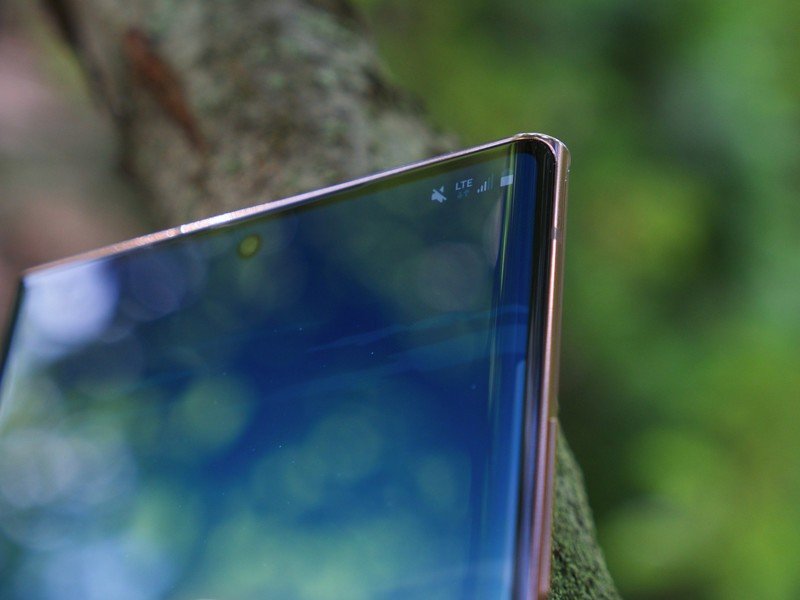
Love it or hate it, using a Samsung phone means using and interacting with its One UI user interface. The Note 20 Ultra shipped with the company's One UI 2.5 software, which was based on Android 10, though back in February 2021, Samsung rolled out an update that brought the Note 20 Ultra to Android 11 and One UI 3.1. And in January 2022, Samsung rolled out the One UI 4 stable update based on Android 12.
It's made up of minor improvements that work together to feel like a significant upgrade to the user experience, and includes all the latest features Google baked into Android. If you're not a fan of Samsung's software, this isn't likely to change your mind, but at least it feels like the company is listening to feedback.
Samsung has created and stuck with a very cohesive design language for the core user interface and all of its first-party apps. This makes the Note 20 Ultra feel super polished, along with giving it a distinct look that's started to catch the attention of competing companies. It's bold, instantly recognizable, and feels faster than ever, thanks to the 120Hz display.
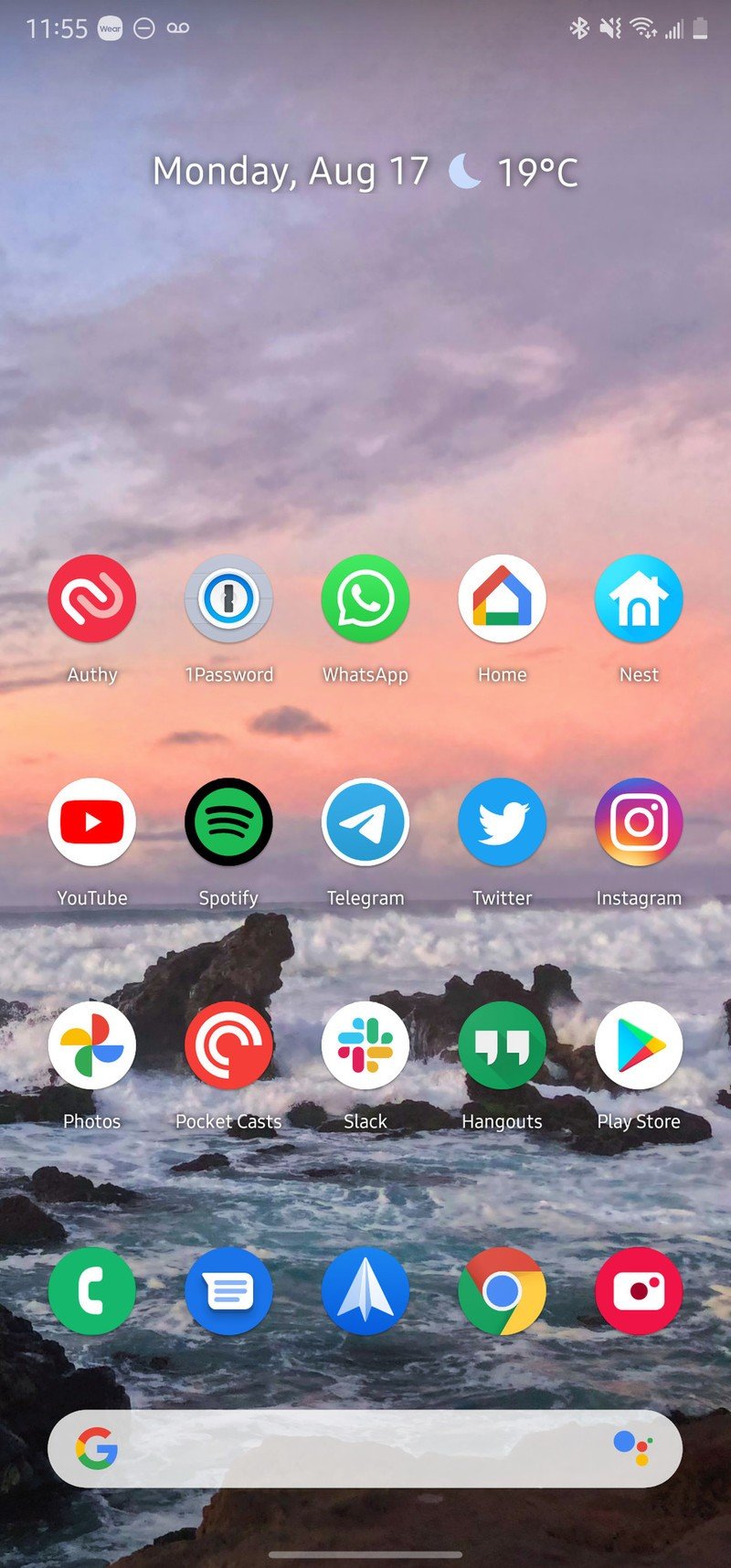


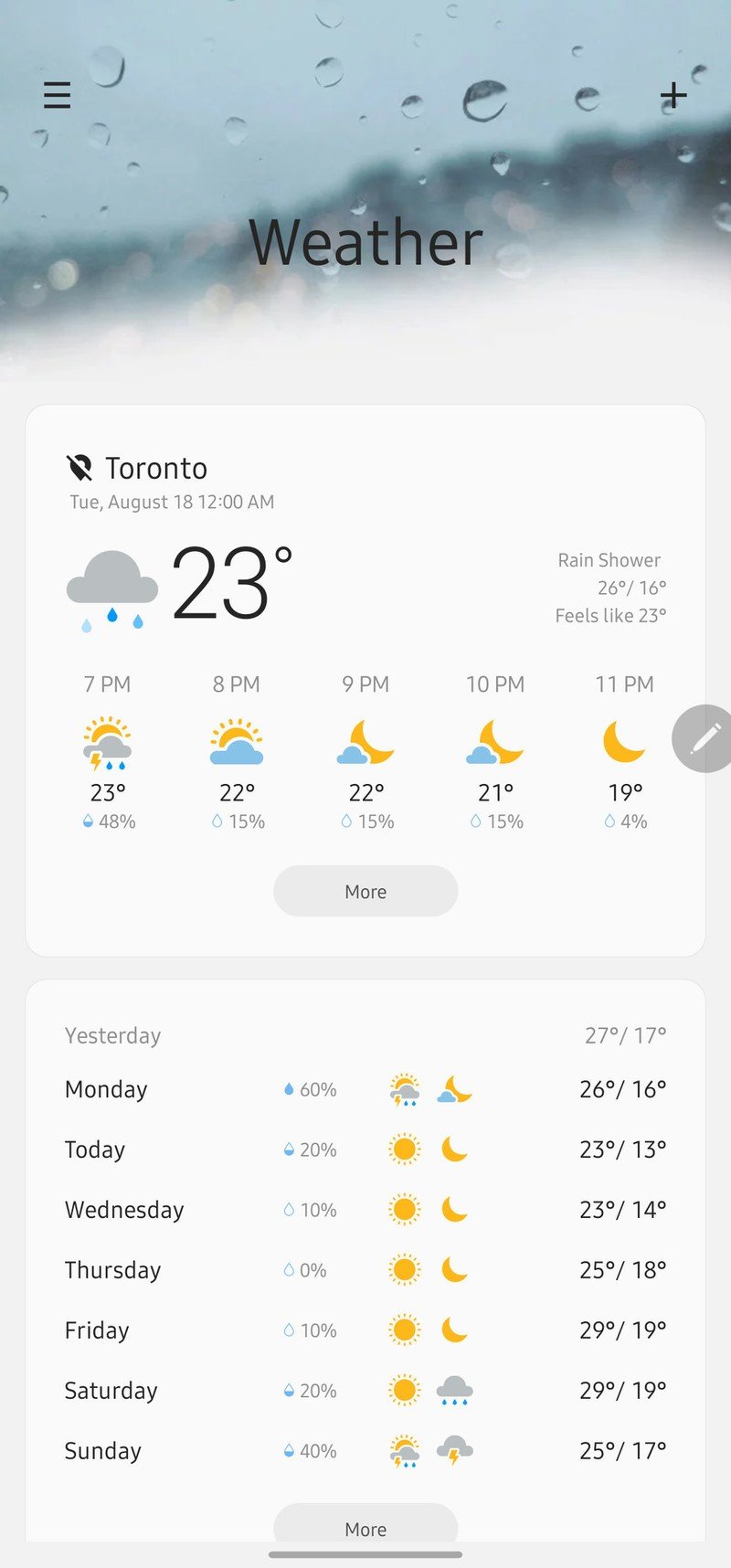

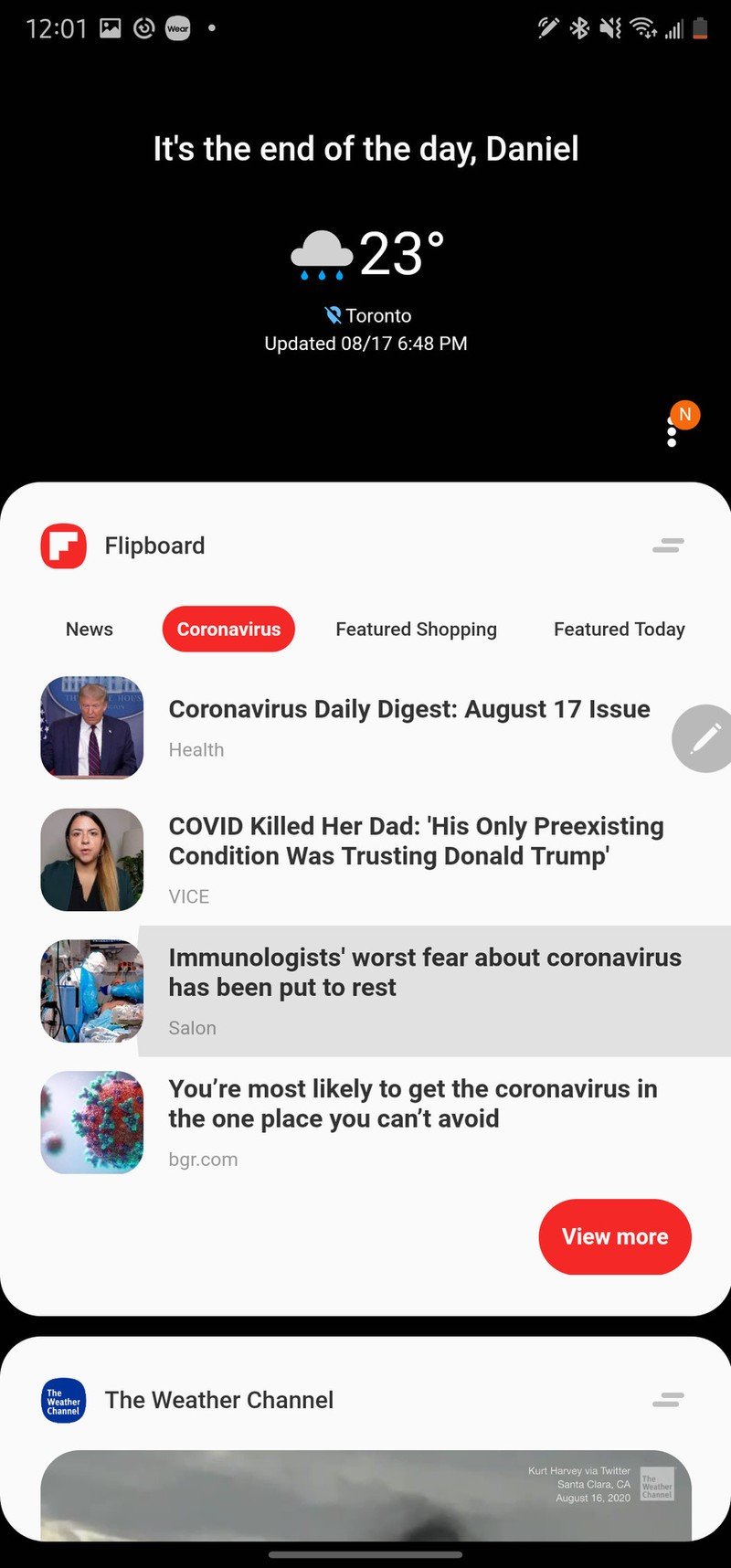
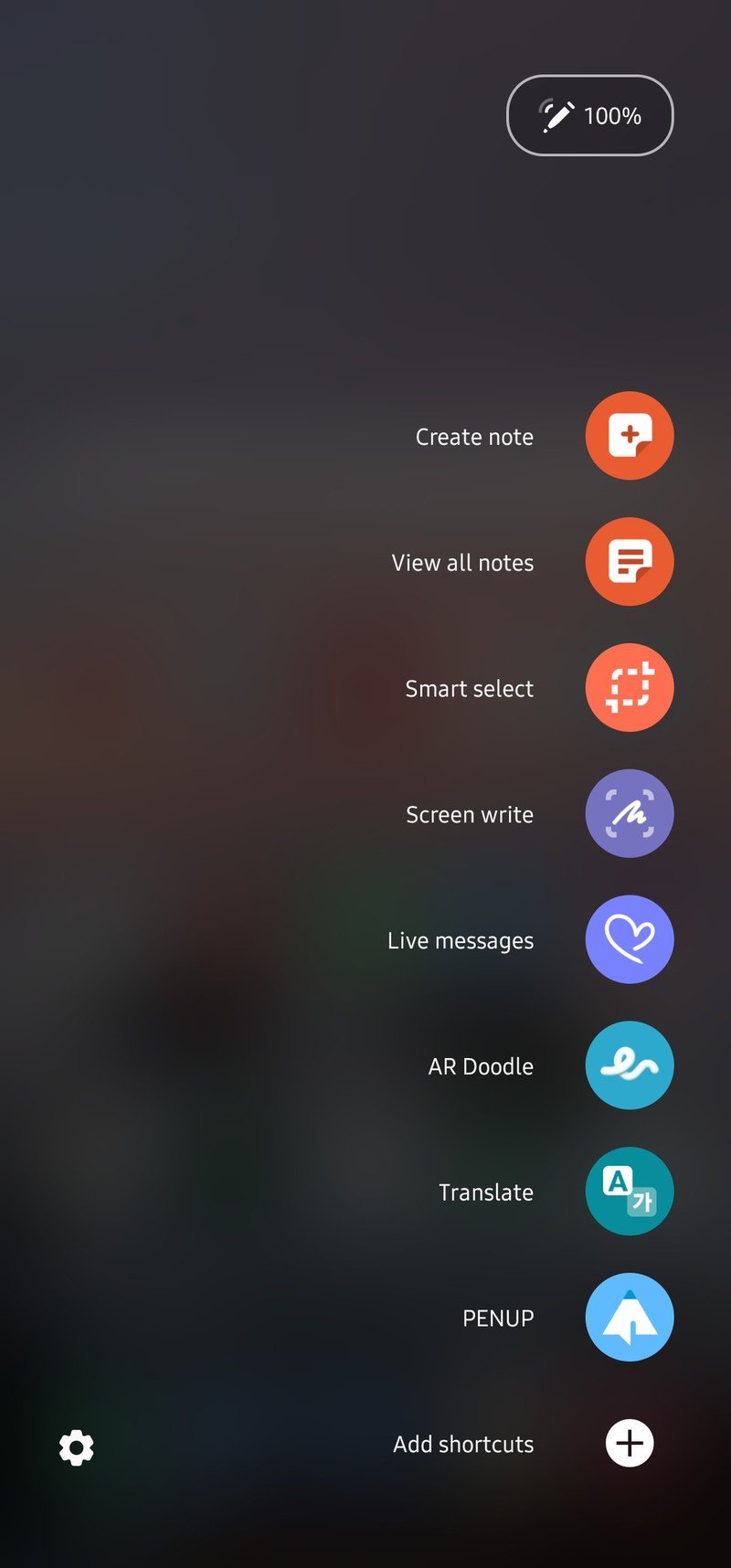


There are far too many extra features here and there to talk about everything that you get with One UI, but there are a few things that are especially noteworthy — one of which being Samsung's continued partnership with Microsoft for the Link to Windows feature. Samsung Notes can now auto-sync with your Microsoft OneNote account, and later this year, you'll be able to run multiple apps from your Note 20 side-by-side on your Windows computer.
Samsung DeX also gets a marked improvement this year, with the Note 20 adding the ability to use the DeX interface on your smart TV wirelessly. As long as you have a TV/streaming device that supports Miracast, you can send the DeX desktop UI to your television and use your Note 20 as a trackpad for navigation. It's another one of those features that you can very easily ignore, but it further adds value to the already massive list of things you can do with a Samsung phone.
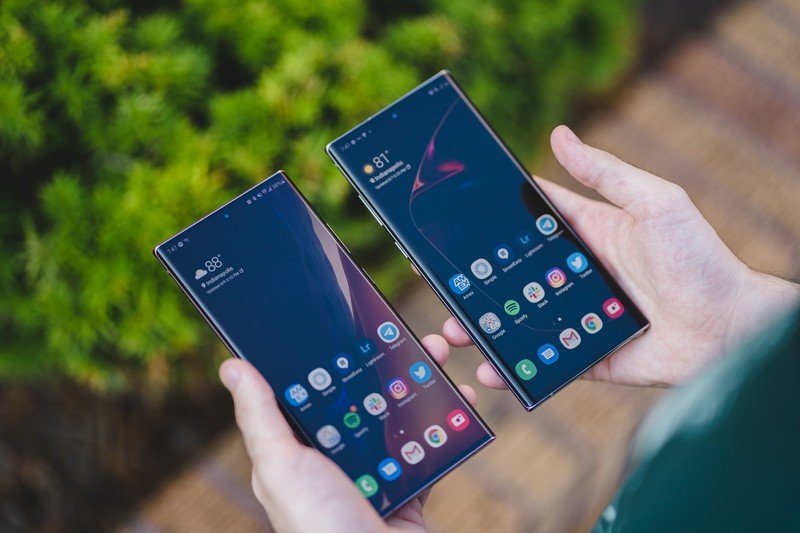
Oh, and you can finally use third-party launchers with Android 11's fully gestural navigation. It's been a long time coming, and I was looking forward to switching over full-time to a third-party launcher like Lawnchair. Unfortunately, the implementation can still be fairly buggy; many times, I found myself stuck inside my active app with the navigation gestures refusing to work until I turned off the screen and unlocked it again. So back to Samsung's launcher I went.
But that choice is ultimately the biggest strength of One UI. I don't have a need for a lot of the features Samsung bakes into it, but for the most part, you can pretty easily ignore them if they aren't of interest to you. There are still a few duplicate apps, which feel wasted on such an expensive smartphone, but the overall software package is pretty damn great.
There's also the fact that Samsung now promises the same three years of software updates that you get on a Pixel, which means you get the best of both worlds — endless features and guaranteed updates.
Samsung Galaxy Note 20 Ultra Cameras

Right off the bat, yes, the Note 20 Ultra fixed the autofocus problems of the S20 Ultra. If that was a concern of yours, take heed and rest easy. Samsung accomplished this not by swapping out the 108MP sensor itself — that's still identical to the S20 Ultra — but by replacing phase-detect autofocus with a laser-assisted focus module.
While Samsung considers the newer (and slightly more affordable) Galaxy S21 Ultra to be the best camera it makes, largely thanks to the improved 108MP sensor that can do 100X "Space Zoom," the Note 20 Ultra's camera system is still extremely competitive — even when you compare the two side-by-side.
This may not be Samsung's best camera, but it's definitely the most reliable.
The Note 20 Ultra's primary camera is huge, both physically and influentially. It's a 1/1.33" sensor, only slightly smaller than the beefy boi inside the Huawei P40 Pro Plus, considered by many (and us) to be among the best sensors in a phone today. That large sensor means there's plenty of room for packing tiny pixels, and Samsung is using nona-binning, pixel binning by a factor of nine, to reach a social media-friendly 12MP with the final shot. Along the way, the photo not only does a great job retaining the incredible spatial detail that 108 megapixels provides, but it technically performs better in lower light situations, too, than other high-resolution sensors that don't bin down as much.

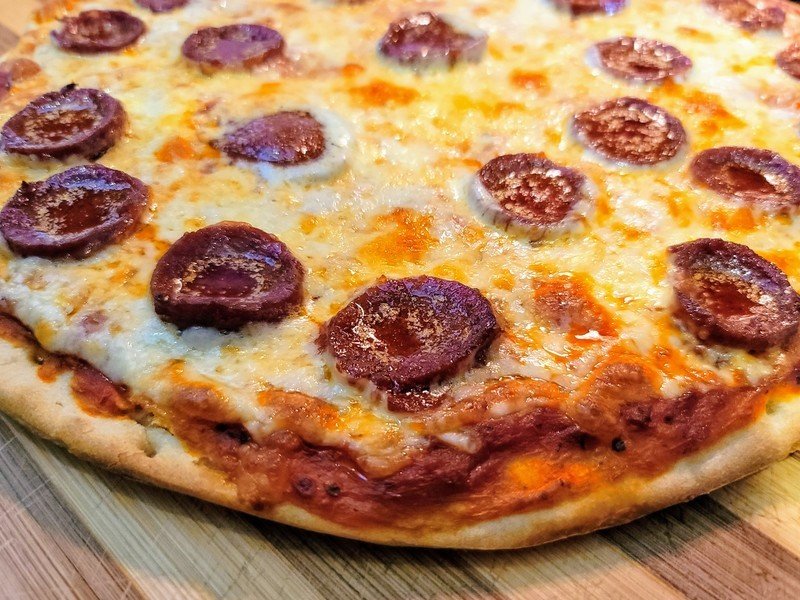
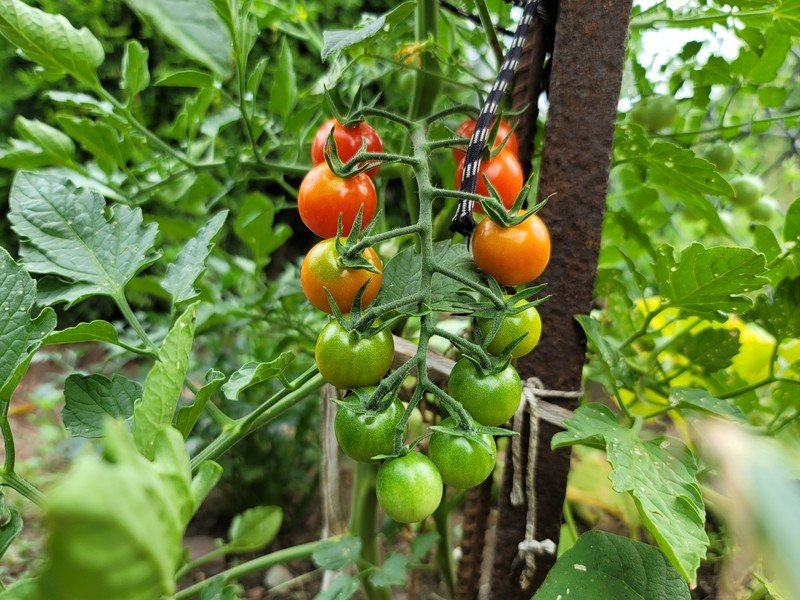






And now that Samsung's resolved the issues around autofocus, I'm happy to say that this is one of the most versatile cameras on an Android phone today. Photos come out typically Samsung-saturated, and the shallow depth of field afforded by the larger sensor adds natural background blur, dramatically accentuating foreground subjects like a DSLR.
This blessing can also be a curse, though, as the usable in-focus area is much narrower than with most other phone cameras; photos that look like they're in focus on the phone may be slightly out of focus when viewed on a larger display. But that shallow focus also yields some incredibly striking shots, including a few that now live in my Google Photos Favorites. I'd have liked a closer minimum focus distance or a dedicated macro lens, but you can't get everything you want.
Pro-tip: An easy way of ensuring your subject is in focus is by switching to Pro mode in the camera app and selecting manual focus. Adjusting the focus ring creates a green "peaking" overlay on what's in focus.
I wrote this in my Galaxy S20+ review, and the same is true here: Samsung still applies way too much skin smoothing to its photos captured in Auto mode. Personal preference, perhaps, but Samsung needs to get out of its own way here and let people add these filters in post-production.
Source: Hayato Huseman / Android Central and Joe Maring / Android Central
I find the effect less severe than on previous models (and subsequent releases have even further reduced the effect), but it's still reliably distracting, something I wish Samsung would address. But then I switch to the ultrawide (which is great, but I'm not going to talk about it because it's the same one as found in the Galaxy S20 series) or the telephoto, and I remember why I love this phone's camera setup.





As I mentioned at the top of this section, Samsung considers the Note 20 Ultra a step down from the S20 Ultra and S21 Ultra's telephoto setups because it uses a smaller 12MP sensor paired with a 5x optical "periscope" f/3.0 lens. Samsung employs this sensor very conservatively; in anything but the brightest conditions, it hops back to a cropped version of the primary sensor.


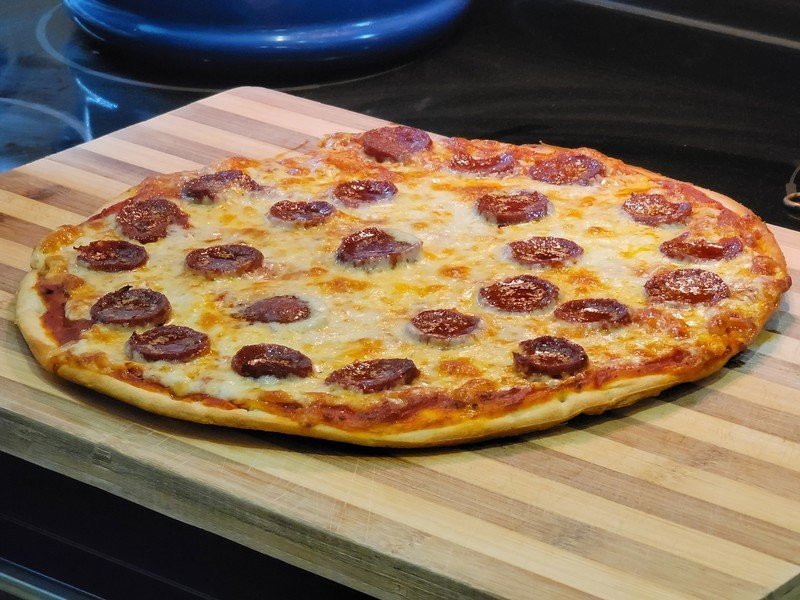



But I've managed to take some really great photos from this telephoto, far better than the temperamental one on the S20 Ultra (though admittedly, I gave up on that phone before a series of software updates improved telephoto performance). The ultrawide is also tons of fun to use because, not in spite of, its tremendous optical distortion.



Night mode performs about the same as the S20 Ultra, which means that despite the larger sensor, the tiny individual pixels can't pull enough light from a very dark scene to eke out much resolvable detail. In this comparison between the Note 20 Ultra, the S20+, and the Pixel 4a, the cheaper Galaxy easily comes out ahead.
The Note 20 Ultra's 10MP selfie camera isn't as good as the one on the S20 Ultra, but that's OK, it's still pretty good. While I also found it to soften facial detail, it still makes me look pretty good, and that's good enough for me.
Finally, Samsung still does video better than any other Android manufacturer; this one does 8K at 24fps or 4K at 60fps, but you'll only get Super Steady mode at 1080p30, and only with the ultra-wide sensor.
Samsung Galaxy Note 20 Ultra Alternatives

To say that the Galaxy Note 20 Ultra is one of the best smartphones is no exaggeration, but as powerful and impressive as it may be, we've seen tons of other top-notch handsets that have come out before it — one of which being Samsung's own Galaxy S20 Ultra — and after it, including the S21 Ultra. The Galaxy S20 Ultra offers a very similar user experience compared to what you get on the Note 20 Ultra, including a 120Hz AMOLED display, a top-of-the-line Snapdragon processor, and an excellent camera system. The S21 Ultra offers an updated 108MP primary sensor, improved Space Zoom tech, an even better display that can run at QHD+ and 120Hz simultaneously, and even steals the Note's thunder by packing S Pen support.
Outside of Samsung's own selection, another great alternative is the newer OnePlus 9 Pro, which touts a 6.7-inch 120Hz screen, Snapdragon 888 chipset, excellent cameras, 50W wireless charging, and 5G connectivity. It's also powered by OxygenOS, which is widely regarded as one of the best Android interfaces on the market. You don't get the S Pen or all of the software goodies found with One UI, but you're getting a phone that's every bit as capable as the Note for a bit less money.
Finally, if you're getting ready to spend up to $1,300 on the Galaxy Note 20 Ultra, it may be worth spending a little bit more for the Galaxy Z Fold 3. This is one of the best folding phones that's currently available, and while it touts plenty of impressive specs, the foldable also has a cool factor that you just don't get with any other "normal" smartphone. The Z Fold 3 extends out from a relatively normal phone form factor to a miniature tablet, making it perfect for multitasking on a bigger screen than any Galaxy Note can offer. And with the Z Fold 3, you get 120Hz panels both on the outside and inside, and it has much better durability along with IPX8 water resistance.
Then there's the Galaxy S22 Ultra, which is basically a Note flagship with Galaxy S branding. You get a massive 6.8-inch AMOLED panel with QHD+ resolution and 120Hz refresh, Snapdragon 8 Gen 1, 108MP camera with OIS, 12MP wide-angle, and 10MP zoom lens with 10x optical zoom, 5000mAh battery with 45W fast charging and wireless charging, and One UI 4 with Android 12. The defining feature is an integrated S Pen that's tucked into the chassis — just like on Note devices.
Samsung Galaxy Note 20 Ultra Should you buy it?

Who it's for
- Current Galaxy Note owners
- Someone looking for an all-in-one smartphone
Who it's not for
- Fans of compact phones
- Value shoppers
The Note 20 Ultra is big. It's expensive. It's niche. It does everything, yet Samsung's having an increasingly difficult time differentiating it from the Galaxy S series.
At this point in the smartphone game, buying a Note is either in your vocabulary, or it's another language completely, especially at this starting price and with these compromises.
4 out of 5
I used the Galaxy S20+ more than any other phone in 2020, and I've spent some time with the S21+; for me, those phones strike the right balance for my needs. The Note 20 Ultra is a better phone in many ways, but it just may also be too much phone for me. I think by now, we've all identified where we land on the spectrum of smartphone needs, and I'll just keep chipping away at S Pen mastery until it's part of my daily routine and I can finally say, without reservation, that I'm a Note person, too.
I have absolutely no reservations recommending such an extraordinary phone, but if you don't need 5G right now, you may want to continue to wait for the networks to improve — and to see what the future of the Note in general looks like. If you're interested in a Note-style device in 2022, the Galaxy S22 Ultra is the obvious choice for its similarities to the Note 20 Ultra, and the fact that you're getting the absolute latest hardware and features.
Review Changelog, February 2022
This article was originally published in August 2020. It was updated in April 2021 and February 2022 with the following changes:
- Updated Pricing and Availability section to reflect current prices with ongoing sales.
- Added mention of Samsung's newer models, including the Galaxy S22 series, and how the S22 Ultra is the obvious option for Note fans in 2022.
- Updated information on the One UI 4 stable build for the Note 20 series.
- Added mentions of Z Fold 3 and Galaxy S22 Ultra as newer alternatives to the Note 20 Ultra in 2022.
Samsung Galaxy Note 20 Ultra Getting started with your new phone
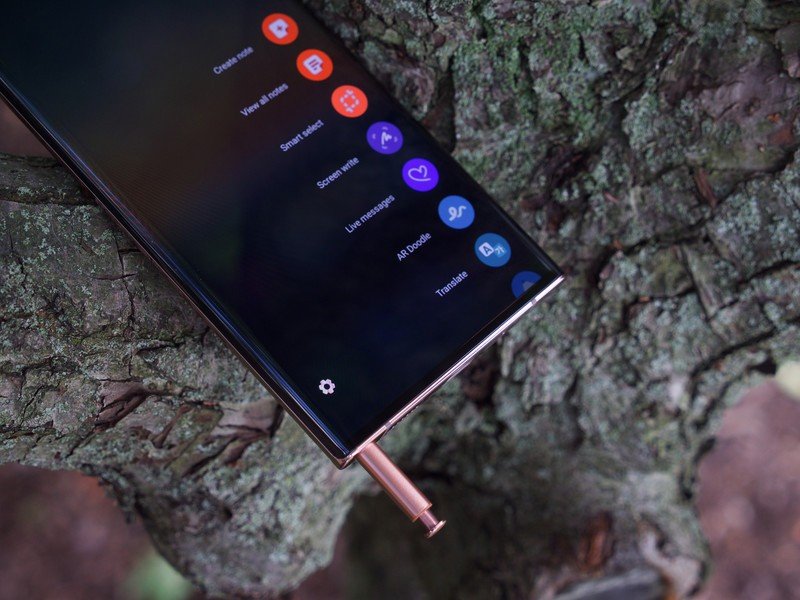
It's safe to say that the Galaxy Note 20 Ultra is a beastly phone, and whether you're brand new to the Note series or are coming from a model that's a few years old, chances are you'll need some help navigating through all of the phone's best features, and deciding which accessories to buy.
Cases and accessories
If you're in the market for a case, we've rounded up the best Galaxy Note 20 Ultra cases. We also have a roundup of the best screen protectors for your Note 20 Ultra if the one that comes with your phone isn't enough.
As for accessories, we've rounded up the best wireless chargers for your new Note 20 as well as the best microSD cards so you can expand your storage.
Finally, if you're still not sure which Note 20 Ultra variant to buy, we have a guide to help you choose the best Galaxy Note 20 Ultra color options.
Features you should know
The Note 20 Ultra has an absolutely gorgeous AMOLED display, and while the stark white background of the user interface looks great during the day, it can be rather blinding at night. This is where dark mode comes into play, which replaces all of those white backgrounds with sleek black ones. It's easy on the eyes, looks fantastic, and can even help you conserve some battery life if you're in a pinch.
We also recommend setting up Samsung Pay on the phone. Samsung Pay is one of the most capable mobile payment solutions on the market, as it works with both NFC and MST technologies (the latter of which you won't find in Samsung's newer flagship releases). In simpler terms, this basically means that you can use the Note 20 Ultra with Samsung Pay at virtually any store you go to. There are still plenty of retailers/shops in the U.S. that haven't adopted payment terminals with tap-and-pay technology, but Samsung Pay is still able to work at these places just fine on the Note 20 Ultra.
Other features you'll want to explore are Samsung Health and Samsung DeX. The former is basically Samsung's alternative to the Fitbit app, giving you a platform for tracking your steps, exercise, and more. With DeX, you can plug your Note 20 Ultra into a computer monitor (or connect it wirelessly to a supported television), see a desktop-like interface, and use your phone as a mobile workstation that's designed to help you get as much work done as possible.
What about the Note 20?
Source: Andrew Martonik / Android Central
While this review focuses on the larger and more expensive (and better, if we're being honest) Galaxy Note 20 Ultra, the Note 20 is also a reasonably good option for the right kind of user.
There are a lot of differences between the two phones, but the main ones revolve around screen refresh rate, material use, and cameras.
While the Note 20 Ultra has a beautiful QHD+ 120Hz refresh rate AMOLED display, the Note 20 is limited to 1080p and 60Hz. Its glass is also flat as opposed to curved, which some may argue is a benefit — our reviewer, Hayato Huseman, agrees, giving the Note 20 a 4.5/5-star review.
The Note 20's back is plastic, though the frame is aluminum like its more expensive counterpart. Its camera setup is also very different — nearly identical to the Galaxy S20+ with a 12MP primary sensor, a 64MP 3x telephoto lens, and a 12MP ultrawide along with a 10MP front-facer.
And while it has a Snapdragon 865+, just like the Note 20 Ultra, the regular Note 20 is limited to 8GB of RAM. There's also 128GB of storage with no option for expansion.
While on paper the Note 20 doesn't seem all that impressive — especially for the $1,000 launch price — we've reviewed the Note 20 and came to the conclusion that it's a really good product and definitely worth your consideration.

Daniel Bader was a former Android Central Editor-in-Chief and Executive Editor for iMore and Windows Central.
